Nettles are a nutritive herb that can be taken freely. They’re a significant source of vitamin C, D, and A. They’re 20% minerals including calcium, silicon, potassium, chromium, phosphorous, magnesium, and zinc.
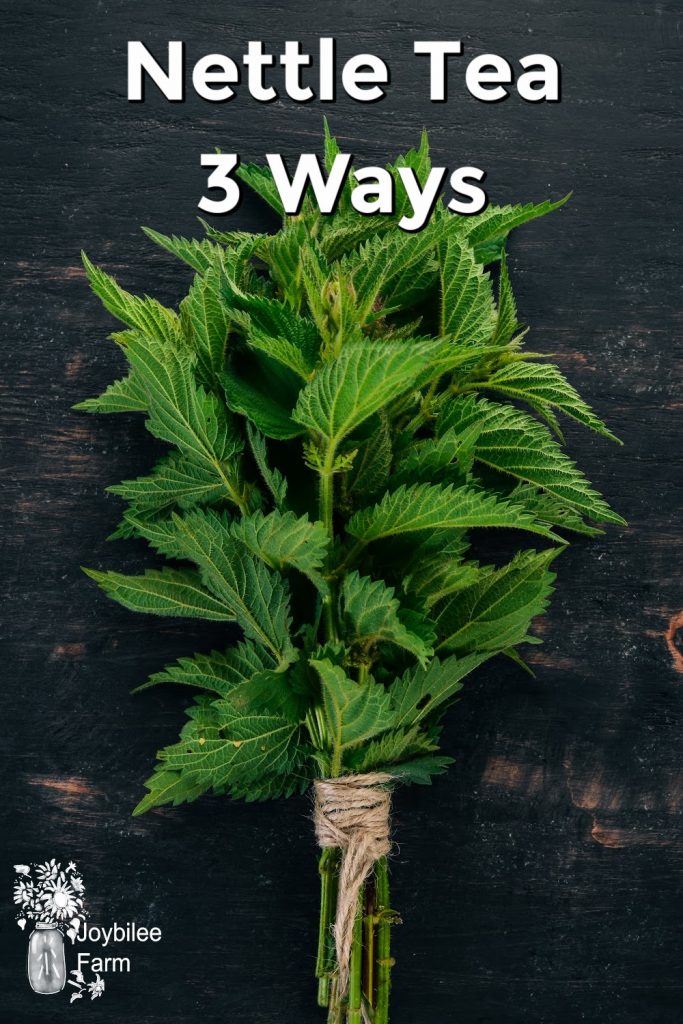
Culpepper says that stinging nettles need no introduction. You will know them if you meet them in the dark. The sting of stinging nettles is a curse to the young but a blessing to the elder. The stinging nettle has tiny hollow hairs covering the surface of every leaf and going up the stems. Even the flowers and seeds are covered in these tiny hairs. And when someone brushes up against the plant, the tiny hairs inject a burning venom into the skin that flames up with inflammation and blistering. This quality is used in arthritis treatment as a counter-irritant to bring blood flow to painful joints.
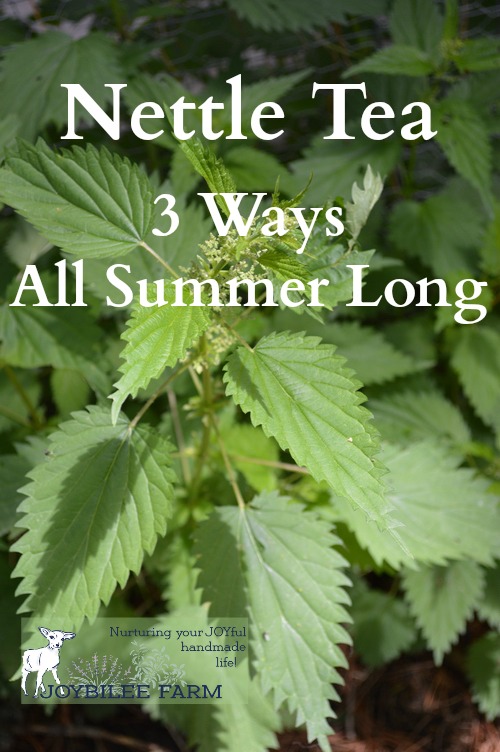
Growing close to stinging nettles you’ll find plantain, jewelweed, yellow dock, mint, sage, rosemary, or comfrey. Any of these can be used to make a spit poultice. The use of this poultice on the nettle sting will bring immediate relief, quell the inflammation and relieve the blistering.
Nutritive and Tonic Nettles
Nettles are a nutritive herb that can be taken freely. Nettle is rich in chlorophyll. They are a significant source of vitamin C, D, and A. The nettle is 20% minerals including calcium, silicon, potassium, chromium, phosphorus, magnesium, and zinc.
Nettle is a spring tonic and traditionally is one of the first greens available in the spring. The nettles are already 8 leaves above the ground at Joybilee Farm. And our snow isn’t gone yet.
To harvest them as a potherb, wear stout gloves so you don’t get stung. Protect the arms, too, with a thick shirt. Cut the plants off at ground level with pruning shears. Wash them with gloves on and stick them into boiling water immediately, so that they aren’t lying around to sting anyone.
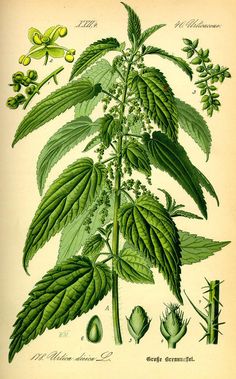
How to preserve nettles for tea
If you plan to dry nettles for tea, wash them with gloves on. Bundle them into bunches of 5 to 10 branches. Hang them in a dry, airy spot to dry. The leaves are fully dry when they crumble when crushed. When dry the venom in the plant is gone, but those stiff hairs can still cause some discomfort, so I wear gloves when removing leaves from the stem. Store the fully dry leaves in a glass jar with a tight-fitting lid. If protected from light and kept dry, the dried leaves of nettle will last for 18 months in storage.
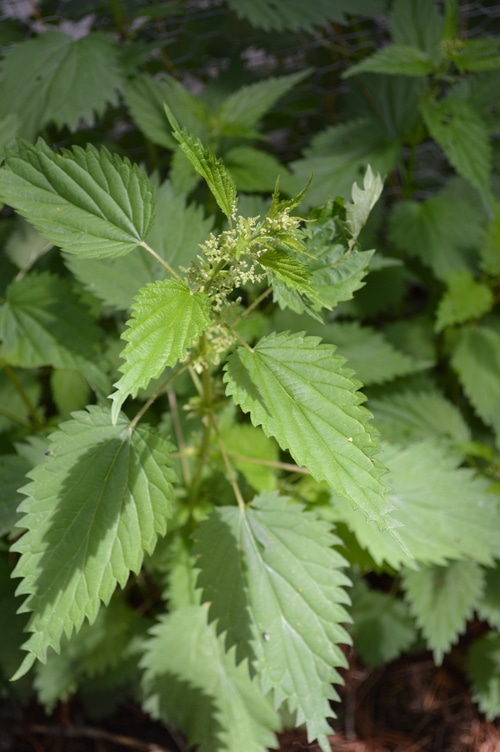
Harvesting in Summer
In the summertime, as the nettle is growing tall, you can still trim off the tops of the plants and dry them in the same way that you dry spring plants. If they are harvested frequently and prevented from flowering, nettles will continue to produce leafy tops for tea all summer long. Around the middle of August, nettles will send up new plants from their underground runners. These can be harvested as potherbs or dried for tea right until you get a killing frost.
Nourishing Nettle Infusion
Susan Weed recommends making a nourishing infusion of nettle leaf as a tonic supplement drink, using 1 ounce of dried nettle leaf and 1 quart of boiling water. Infuse the tea in a mason jar with a lid for 4 hours or overnight. Strain and refrigerate. Drink the infusion within 2 days as it is rich in vitamins and minerals.
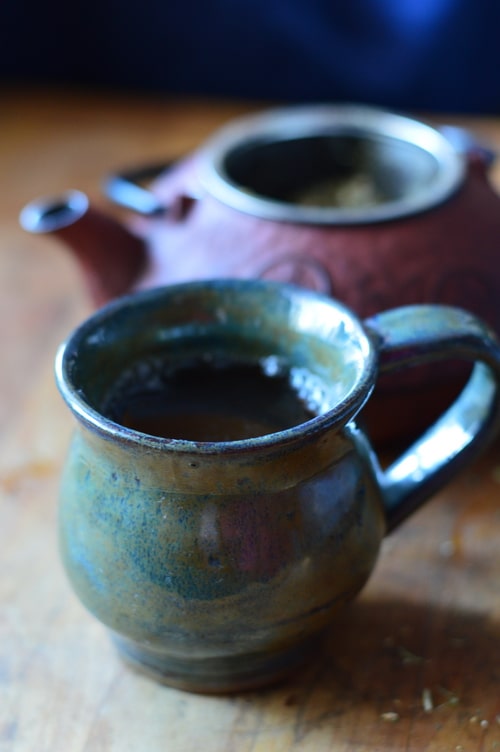
Nettle Tea
2 tsp. of nettle leaf tea
1 tsp. of holy basil tea or tulsi tea
1/2 tsp. cinnamon
1/4 tsp. dried ginger
Mix the herbs and spices together in a tea strainer. Pour boiling water over the herbs into a cup. Cover with a lid and allow the herbs to steep for 15 to 20 minutes. Stain and drink.
For the Garden
Your plants will enjoy a nourishing nettle infusion, too. You can feed any leftover tea, once cool, to your house plants. Or make Nettle tea for nitrogen-rich, mineral-rich tea for your garden.
Place nettles in a bucket, you don’t need to wash them if you are using them in the garden. Pour cold water over them. Let them steep, covered for 48 hours or even longer. Use the infusion to water plants in the greenhouse or in containers. The spent nettles can be added to the compost pile.
If you don’t have fresh nettles to harvest
I buy organic nettle leaves at Mountain Rose Herbs or the Bulk Herb Store.


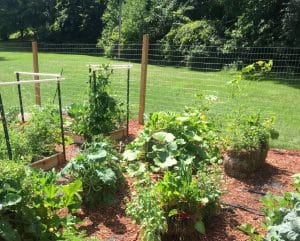

Its better to dry herbs in the shade. Once they are picked the sun can removed antioxidants from the leaves.